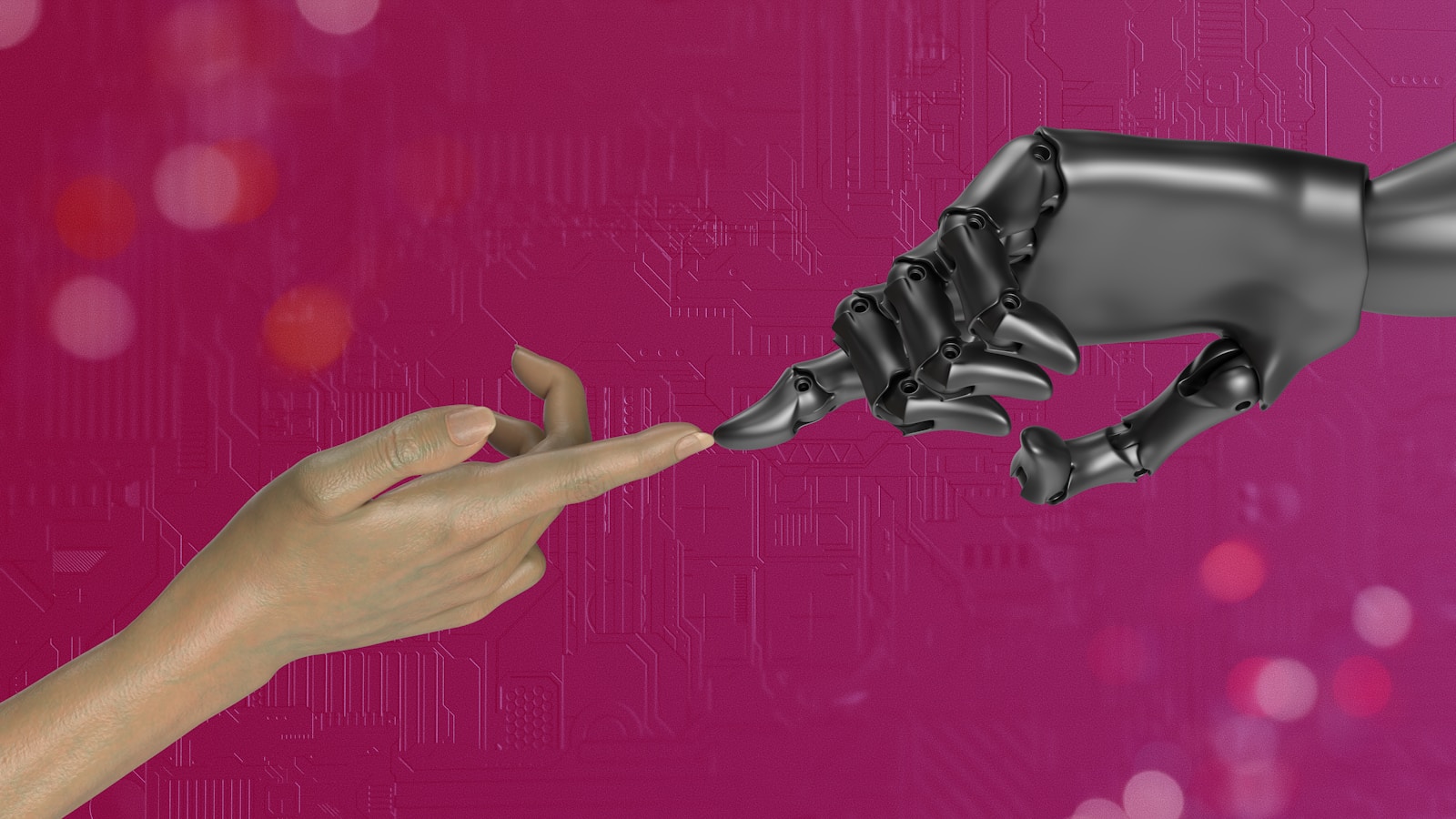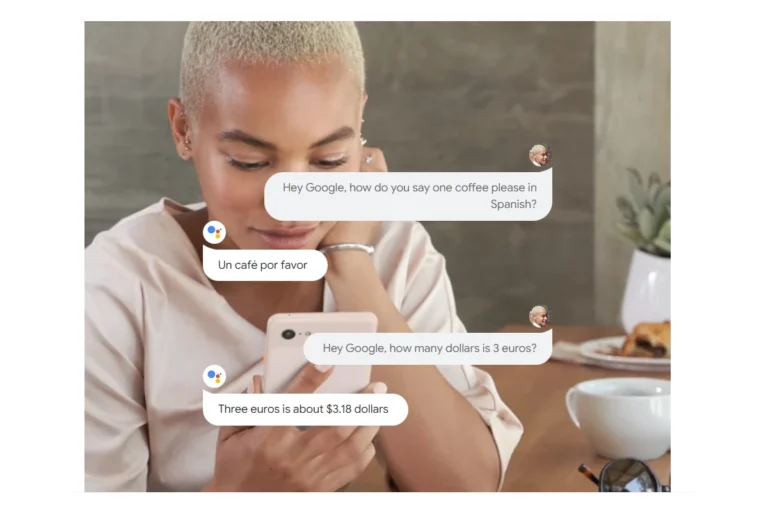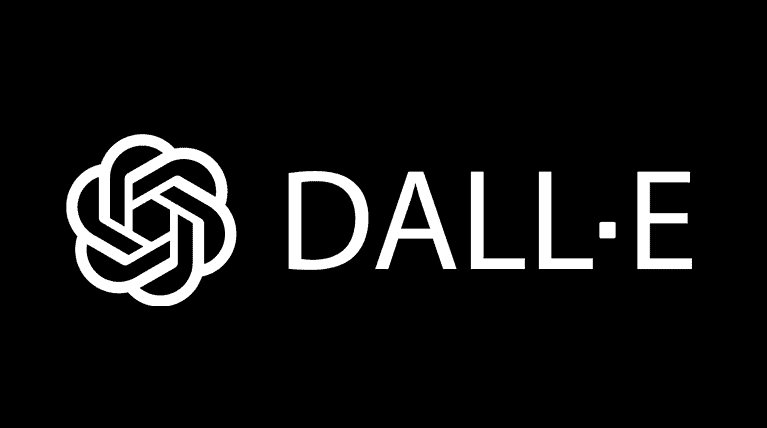
Artificial intelligence has quietly become part of our daily routines, transforming how we live, work, and play. From the moment you wake up and check your weather app to when you stream a movie recommendation at night, AI works behind the scenes to enhance your experience. AI touches nearly every aspect of modern life, powering everything from spam filters in your email to voice assistants like Alexa and Siri that respond to your commands.
The reach of AI extends far beyond just our smartphones. When you shop online, AI algorithms suggest products based on your browsing history. Banking systems use AI to detect unusual transactions and protect your accounts from fraud. Even your daily commute is influenced by AI, with navigation apps calculating the fastest routes based on real-time traffic data and weather conditions.
Many people use AI tools without even realizing it. The technology has become so seamlessly integrated that it’s often invisible. From scheduling appointments to filtering unwanted calls, AI simplifies tasks that once required significant human effort. As these systems continue to evolve, they learn from our behaviors and preferences to provide increasingly personalized experiences.
AI in Everyday Life
Artificial Intelligence (AI) is no longer just a futuristic concept—it’s woven into the fabric of our daily routines. From the moment you wake up to the time you go to bed, AI shapes how you work, shop, travel, and even relax. Here’s a breakdown of the most common ways AI is making life easier, smarter, and more personalized.
1. Smartphones & Virtual Assistants
- Examples: Siri, Google Assistant, Alexa
- How it works: AI powers voice recognition, natural language understanding, and predictive suggestions.
- Impact: Hands-free control for tasks like setting reminders, sending texts, or searching the web.
2. Social Media & Entertainment
- Examples: TikTok, Instagram, Netflix, Spotify
- How it works: AI algorithms analyze your preferences and recommend content you’re most likely to enjoy.
- Impact: Personalized feeds, music playlists, and movie suggestions keep you engaged.
3. Shopping & Recommendations
- Examples: Amazon, eBay, online grocery apps
- How it works: AI studies your browsing and purchase history to suggest products.
- Impact: Saves time and introduces you to items you might need but didn’t know existed.
4. Healthcare & Fitness
- Examples: Wearables like Fitbit, Apple Watch; AI health apps
- How it works: AI tracks heart rate, sleep, activity, and can even detect irregularities.
- Impact: Early detection of health issues, personalized fitness coaching, and telehealth support.
5. Transportation & Navigation
- Examples: Google Maps, Uber, Tesla Autopilot
- How it works: AI optimizes routes, predicts traffic, and powers self-driving technology.
- Impact: Shorter commutes, safer driving, and more efficient travel.
6. Smart Homes
- Examples: Smart thermostats, lighting systems, security cameras
- How it works: AI learns your habits—like when you wake up or leave home—to adjust heating, lighting, and security.
- Impact: Energy savings, convenience, and peace of mind.
7. Finance & Banking
- Examples: Fraud detection, robo-advisors, budgeting apps
- How it works: AI detects unusual spending patterns, automates investments, and helps you track expenses.
- Impact: Safer transactions and smarter money management.
8. Education & Work
- Examples: AI tutors, Grammarly, ChatGPT, Zoom transcription
- How it works: AI personalizes learning, checks grammar, summarizes meetings, and automates repetitive tasks.
- Impact: More productive workdays and tailored learning experiences.
9. Cybersecurity
- How it works: AI scans for unusual activity, predicts potential breaches, and blocks threats in real time.
- Impact: Protects personal data and ensures safer online interactions.
10. Daily Convenience
- Examples: Email spam filters, smart calendars, AI reminders
- How it works: AI organizes your inbox, schedules events, and reminds you of deadlines.
- Impact: Reduces digital clutter and keeps you on track.
🌍 Why It Matters
AI isn’t just about convenience—it’s transforming industries and reshaping how we interact with technology. By automating routine tasks, predicting our needs, and offering personalized experiences, AI frees up time for what really matters.
✅ Takeaway: Whether you’re streaming music, asking your phone for directions, or adjusting your thermostat, AI is already a daily companion—often working behind the scenes to make life smoother.
Key Takeaways
- AI powers everyday technologies like voice assistants, recommendation systems, and smart home devices that simplify daily tasks.
- Security applications of AI protect personal information through facial recognition, fraud detection, and spam filtering.
- Ethical considerations around privacy and data usage remain important as AI becomes more integrated into daily life.
Historical Context of AI
The journey of artificial intelligence began long before our modern computers. Humans have dreamed about creating thinking machines since ancient times, with stories and myths of mechanical beings given the power of thought.
The formal birth of AI as a field occurred in 1956 at the Dartmouth Conference. This meeting brought together scientists who believed machines could simulate human intelligence and solve problems the way people do.
Early AI research focused on symbolic reasoning and rule-based systems. These systems could solve specific problems but lacked the flexibility of human thinking.
The 1970s and 1980s saw the first “AI winter” when progress slowed and funding decreased due to overpromised results. Many early predictions about AI capabilities proved too optimistic.
Neural networks gained momentum in the 1980s but weren’t practical until computing power caught up. The technology mimics how human brain cells connect and process information.
The 1990s introduced AI agents into everyday life with innovations like the first Roomba vacuum and early speech recognition systems. These practical applications showed AI’s potential beyond research labs.
Machine learning transformed AI development in the 2000s. Instead of programming specific rules, systems could learn patterns from data.
Deep learning breakthroughs around 2012 revolutionized image recognition, natural language processing, and other complex tasks. These advances used multiple layers of neural networks to achieve unprecedented accuracy.
Today, AI has become deeply integrated into daily life through smartphones, digital assistants, translation services, and countless other applications that many people use without realizing they’re powered by artificial intelligence.
AI in Daily Technologies
Artificial intelligence has become embedded in our everyday devices and systems, making our lives more convenient while operating mostly behind the scenes. Modern technologies now incorporate smart algorithms that learn from our behaviors and adapt to our needs.
Voice Assistants and Smart Homes
Voice assistants like Alexa, Siri, and Google Assistant use natural language processing to understand and respond to verbal commands. These AI-powered tools can control smart home devices, answer questions, and even make purchases online.
The AI technology behind these assistants continuously improves through machine learning, becoming more accurate at recognizing different accents and speech patterns over time.
Smart home systems integrate with these assistants to create automated environments. Users can program lights to adjust based on time of day, set thermostats to learn temperature preferences, and configure security systems to detect unusual activity.
These AI applications save time and energy by:
- Automating routine household tasks
- Providing hands-free control of devices
- Creating personalized environments based on user habits
Email Automation and Management
Email platforms like Gmail employ sophisticated AI algorithms to sort incoming messages and identify potential spam. These systems analyze message content, sender information, and user behavior patterns.
The AI manages daily communication by automatically categorizing emails into primary, social, and promotional tabs. This organization helps users focus on important messages without getting overwhelmed.
Smart composition features suggest responses and complete sentences based on individual writing styles. Gmail’s Smart Reply offers contextually appropriate responses with a single click.
Scheduling assistants embedded in email applications can:
- Identify meeting requests in message content
- Suggest available time slots based on calendar availability
- Automatically send reminders and follow-ups
Navigation and Transportation
Navigation apps employ AI to analyze real-time traffic data, weather conditions, and historical patterns to suggest optimal routes. These systems continuously improve as they collect more data points from millions of users.
Ride-sharing platforms use AI algorithms to match drivers with riders efficiently, predict demand surges, and calculate dynamic pricing. The technology optimizes pickup locations and routes to minimize wait times.
Advanced driver-assistance systems incorporate AI to enhance safety through:
- Lane departure warnings
- Automatic emergency braking
- Adaptive cruise control
Self-driving vehicle technology represents the culmination of these navigation systems, using computer vision and deep learning to interpret road conditions and make driving decisions without human intervention.
AI in Communication and Productivity
Artificial intelligence has transformed how we communicate and manage our daily tasks. These technologies now handle everything from customer conversations to sorting emails, making our work lives more efficient.
Chatbots and Customer Support
Chatbots have revolutionized customer service by providing instant responses to common questions. Many businesses now use AI-powered chatbots that can help simplify daily routines and create smoother experiences for customers.
These digital assistants can handle multiple conversations simultaneously, reducing wait times and freeing human agents to tackle more complex issues. Companies like Bank of America, Sephora, and Starbucks use sophisticated chatbots that learn from each interaction.
The technology has advanced significantly in recent years. Modern chatbots can understand context, remember previous conversations, and even detect customer emotions through text analysis.
For businesses, this means 24/7 support without the cost of round-the-clock staffing. For customers, it means getting help anytime without waiting on hold.
Natural Language Processing in Tools
Natural Language Processing (NLP) powers many productivity tools we use daily. Email platforms like Gmail use NLP to categorize messages, suggest replies, and filter spam with remarkable accuracy.
Writing assistants like Grammarly and tools within Microsoft Office use NLP to check grammar, suggest better phrasing, and even help craft appropriate tones for different audiences.
Voice assistants such as Siri, Alexa, and Google Assistant rely on NLP to understand spoken commands and questions. They can schedule appointments and manage calendars, making everyday planning more efficient.
Translation tools have improved dramatically through NLP, breaking down language barriers in real-time communication. Google Translate now offers near-instant translation across over 100 languages.
Meeting tools like Otter.ai and Microsoft Teams can transcribe conversations, extract action items, and create searchable records of discussions, saving hours of note-taking.
Innovations in Healthcare
AI technology is transforming modern healthcare systems by enhancing diagnosis accuracy and improving how medical data is analyzed. These advances are making healthcare smarter, faster, and more efficient.
AI-powered Diagnostics
Medical professionals now use AI to detect diseases earlier and with greater precision. AI algorithms can identify patterns in medical images that might be missed by human eyes. For example, AI systems can analyze X-rays, MRIs, and CT scans to detect anomalies like tumors or fractures.
In radiology, AI tools have demonstrated impressive accuracy in spotting early signs of diseases like cancer. These tools don’t replace doctors but enhance their capabilities by providing a “second opinion” that helps reduce diagnostic errors.
AI also powers remote monitoring devices that track patient vital signs and alert healthcare providers to potential problems before they become emergencies. This technology is particularly valuable for managing chronic conditions like diabetes and heart disease.
Health Data Analysis
Healthcare generates massive amounts of data daily. AI excels at processing this information to identify trends and insights that would be impossible to spot manually.
AI systems can analyze patient records across entire populations to identify risk factors and predict disease outbreaks. This helps healthcare providers allocate resources more effectively and implement preventive measures.
Electronic health records (EHRs) paired with AI can spot connections between seemingly unrelated symptoms, medications, and outcomes. This helps doctors make more informed treatment decisions based on comprehensive data analysis.
Pharmaceutical companies use AI to accelerate drug discovery and development. The technology can predict how potential compounds might interact with disease targets, significantly reducing the time and cost of bringing new treatments to patients.
AI in Security and Surveillance
Artificial intelligence has transformed security systems by enhancing threat detection capabilities and automating surveillance processes. These technologies work around the clock to protect both physical spaces and digital information.
Cybersecurity Enhancements
AI-powered cybersecurity tools can detect unusual patterns that might indicate a security breach. These systems analyze network traffic and identify potential threats faster than human analysts could manage alone.
Machine learning algorithms continually improve their detection capabilities by learning from new threat patterns. This adaptive approach helps reduce false alarms while maintaining high security standards.
Key benefits of AI in cybersecurity include:
- Automated threat response that activates within seconds
- Predictive analysis to anticipate potential vulnerabilities
- Behavior monitoring to identify suspicious user activities
Many organizations now implement AI solutions that can process millions of security events daily, prioritizing alerts that require immediate attention and reducing cybersecurity staff burnout.
Automated Monitoring Systems
Smart security cameras with AI capabilities can distinguish between humans, animals, and objects, significantly reducing false alarms. These systems only alert security personnel when genuine concerns arise.
Home security has become more accessible through AI integration. Modern security systems analyze ordinary movements versus potential threats, such as an unauthorized entry versus wind moving objects.
AI surveillance extends beyond physical security into digital spaces. Algorithms now monitor social media activities and online behavior patterns to identify potential threats before they materialize.
Businesses leverage these technologies to:
- Monitor large areas with fewer human resources
- Provide 24/7 surveillance without fatigue
- Create searchable video archives using object recognition
Impact on Literature and Creative Fields
Artificial intelligence tools have revolutionized how writers, artists, and other creatives approach their work. These technologies both enhance creative processes and introduce new challenges regarding originality and authenticity.
Generative AI in Art and Writing
AI writing assistants now help authors overcome writer’s block by generating ideas and even entire paragraphs that serve as starting points for human creativity. Neural networks like GPT-4 can craft poetry, short stories, and marketing copy in seconds, dramatically reducing production time.
In visual arts, systems like DALL-E and Midjourney transform text descriptions into complex images, allowing artists to explore new aesthetic directions. These tools are increasingly positioned as creative aids rather than replacements for human artists.
The publishing industry has adopted AI for editing, proofreading, and translation services. This automation allows creative professionals to focus on higher-level creative tasks while AI handles technical aspects.
Plagiarism Detection Advances
AI-powered plagiarism detection tools have grown increasingly sophisticated, comparing submitted works against vast databases of published content. These systems can identify not only direct copying but also paraphrased content and translated plagiarism.
Educational institutions rely on neural network-based detection systems to maintain academic integrity, with algorithms that learn from each submission to improve future detection capabilities.
For publishers and literary agents, these tools help verify the originality of manuscripts before publication. This protects against copyright infringement and maintains trust in the publishing ecosystem.
The technology has created a complex dynamic where AI can both create content and detect AI-generated work, challenging traditional definitions of authorship and originality in literature.
AI for Enhanced Decision-Making
Artificial intelligence is transforming how we make decisions by processing vast amounts of data quickly and identifying patterns humans might miss. This technology helps both organizations and governments make more informed choices based on evidence rather than gut feeling.
Business and Finance
In the business world, AI systems are becoming essential tools for making smarter, faster choices. Companies use AI algorithms to analyze market trends, customer behavior, and operational data to optimize their strategies. For example, retail businesses employ AI to determine optimal pricing, inventory levels, and personalized product recommendations.
Financial institutions leverage AI for risk assessment and fraud detection. The technology can evaluate loan applications by analyzing applicants’ financial histories more thoroughly than traditional methods. Investment firms use AI-powered analytics to identify promising opportunities and manage portfolios.
AI’s ability to rapidly process large volumes of data helps identify patterns and anomalies that human analysts might overlook. This leads to more data-driven decisions and reduced human bias.
Public Policy and Governance
Governments increasingly rely on AI to improve public services and policy decisions. City planners use AI to analyze traffic patterns and optimize public transportation systems, reducing congestion and pollution.
In healthcare policy, AI helps analyze population health data to allocate resources more effectively and predict disease outbreaks. This allows for more proactive rather than reactive governance.
Law enforcement agencies employ predictive analytics to deploy resources where they’re most needed, though ethical concerns about bias remain important considerations. Environmental agencies use AI to monitor pollution levels and predict climate change impacts.
AI is transforming virtually every facet of modern governance, from infrastructure planning to social services delivery. The key advantage is the ability to process complex, interconnected data sets that were previously too overwhelming for human analysis alone.
Automation of Repetitive Tasks
AI technology has transformed how we handle routine tasks in both industrial settings and everyday life. By taking over monotonous activities, these systems free up human time and reduce errors while increasing productivity.
Industrial Automation
In manufacturing environments, AI-driven automation handles repetitive tasks with remarkable precision. Robots on assembly lines perform the same movements thousands of times without fatigue or variation, maintaining consistent quality standards.
AI systems excel at predictive maintenance, analyzing equipment data to identify potential failures before they happen. This prevents costly downtime and extends machine lifespans. Many factories now implement these technologies to monitor production lines 24/7.
Data entry and processing tasks that once required hours of human effort are now handled automatically. AI can extract information from documents, categorize it, and enter it into databases with minimal human oversight.
Customer service has been revolutionized through automated chatbots and voice assistants that handle routine inquiries. These systems can:
- Answer common questions
- Process basic transactions
- Route complex issues to human agents
- Operate continuously without breaks
Domestic Chores and Robotics
In homes across the world, AI-powered devices tackle mundane household tasks. Robot vacuums navigate rooms independently, learning floor plans and cleaning schedules based on family habits.
Smart appliances use AI to optimize their performance. Washing machines adjust water levels and cycle times based on load weight and fabric type. Refrigerators can track inventory and suggest recipes using available ingredients.
AI automation extends to personal organization as well. Virtual assistants schedule appointments, set reminders, and manage shopping lists. These tools learn user preferences over time, becoming more helpful with continued use.
Home security systems employ AI to distinguish between normal activities and potential threats. They can recognize family members, pets, and delivery personnel, reducing false alarms while maintaining vigilance against actual intruders.
AI in Education and Training
Artificial intelligence is transforming education by creating personalized learning experiences and uncovering valuable insights through data analysis. These technologies help both students and teachers achieve better outcomes while reducing administrative burdens.
Adaptive Learning Systems
AI-powered adaptive learning systems create personalized educational experiences by adjusting to each student’s unique needs and abilities. These systems track student performance and modify content difficulty in real-time.
When a student struggles with a concept, the AI presents simpler explanations or additional practice. For students who master topics quickly, the system advances them to more challenging material, preventing boredom.
Teachers benefit from these systems too. AI can automate routine tasks like grading multiple-choice assessments and providing basic feedback, giving educators more time for meaningful instruction and personal interaction.
Many platforms now use machine learning algorithms to identify each student’s learning style and present information accordingly, whether through visual aids, audio explanations, or interactive exercises.
Educational Data Analysis
AI excels at analyzing vast amounts of educational data to identify trends and opportunities for improvement. Machine learning algorithms can process information from thousands of students to predict learning outcomes and identify those at risk of falling behind.
These systems examine factors like assignment completion rates, quiz performance, and even engagement metrics such as time spent on different activities. This helps teachers intervene before small issues become major obstacles.
Schools use AI to evaluate curriculum effectiveness by analyzing which lessons lead to the best student outcomes. This data-driven approach allows for continuous improvement of teaching materials.
AI tools also help streamline administrative tasks like scheduling, record management, and parent communications, increasing overall institutional productivity. This gives staff more time to focus on supporting students rather than paperwork.
Challenges and Ethical Considerations
As AI becomes more integrated into our daily lives, important concerns have emerged about its impact on society and individuals. These challenges require careful attention to ensure AI serves humanity ethically and responsibly.
Addressing Bias in AI
AI systems are only as fair as the data used to train them. When algorithms learn from biased historical data, they can perpetuate or amplify discrimination in their decisions. For example, facial recognition systems have shown lower accuracy rates for women and people with darker skin tones.
Companies are now implementing fairness audits and diverse training datasets to combat these issues. Some organizations use “algorithmic impact assessments” to identify potential biases before deploying AI systems.
Machine learning experts are also developing technical solutions like “fairness constraints” that mathematically enforce equitable outcomes across different groups. These approaches help ensure AI doesn’t disadvantage already marginalized communities.
Regulatory frameworks are emerging globally to mandate fair AI practices, though implementation varies widely by region and industry.
Privacy and Data Management
AI systems rely on massive amounts of data, often including personal information that raises significant privacy concerns. From voice assistants recording conversations to shopping algorithms tracking purchases, data collection is ubiquitous.
Strong data governance policies are essential to protect individuals. This includes:
- Data minimization: Collecting only necessary information
- Purpose limitation: Using data only for intended purposes
- Transparency: Clearly explaining how data is used
- User control: Providing options to access or delete personal data
Advanced privacy-preserving techniques like federated learning allow AI to improve without centralizing sensitive data. This approach keeps personal information on individual devices while still contributing to model improvements.
Cybersecurity must evolve alongside AI to prevent sophisticated attacks that could compromise data security. As decision-making becomes more automated, protecting these systems becomes increasingly critical.
Frequently Asked Questions
Artificial intelligence has woven itself into many aspects of our daily routines, often working quietly behind the scenes. These common questions explore how AI technologies enhance our homes, workplaces, and essential services.
What are some common applications of AI that we encounter in our homes?
Smart home devices like virtual assistants including Siri, Alexa, and Google Assistant use AI to manage our daily tasks. These systems help with setting alarms, tracking appointments, and answering questions.
Smart thermostats learn our temperature preferences and adjust automatically to save energy. AI-powered robot vacuums map our homes to clean efficiently without human intervention.
Entertainment services use AI algorithms to recommend movies, shows, and music based on our previous viewing and listening habits. Even our kitchen appliances now incorporate AI to optimize cooking times and food storage conditions.
In what ways does AI enhance our daily work efficiency?
Email filters automatically sort important messages and identify spam, saving valuable time. AI-powered writing assistants check grammar, suggest improvements, and help professionals craft better communications.
Project management tools use AI to predict completion timelines and allocate resources more effectively. Chatbots handle customer service inquiries, allowing human agents to focus on more complex issues.
Data analysis tools quickly process large volumes of information and highlight important patterns that might otherwise be missed. Translation services powered by AI facilitate smoother communication in global business environments.
How does artificial intelligence contribute to advancements in healthcare?
AI algorithms analyze medical images like X-rays and MRIs to help detect abnormalities and assist in diagnoses. Predictive models identify patients at higher risk for certain conditions, enabling earlier interventions.
Robot-assisted surgeries provide greater precision for delicate procedures. Natural language processing helps digitize and organize medical records, making patient histories more accessible.
Drug discovery processes use AI to identify potential new medications by analyzing molecular structures and predicting effectiveness. Wearable devices with AI capabilities monitor vital signs and alert users to potential health concerns.
What role does AI play in the personalization of online experiences?
E-commerce platforms use AI to track browsing patterns and suggest products that align with individual preferences. News feeds adjust content based on reading habits to show more relevant stories.
Online advertising targets users with products and services based on their search history and online behavior. Streaming platforms recommend music, movies, and shows tailored to each user’s taste.
Language learning apps adjust difficulty levels based on individual progress and learning patterns. Travel websites remember preferences and suggest destinations that match previous booking patterns.
How are transportation systems improving through the use of AI technologies?
Traffic management systems use AI to analyze flow patterns and adjust signal timing to reduce congestion. Navigation apps predict the fastest routes by processing real-time traffic data and historical patterns.
Ride-sharing services optimize driver assignments and estimate arrival times using complex AI algorithms. Self-driving vehicle technology continues to advance through AI systems that process visual information and make driving decisions.
Public transportation networks use AI to predict maintenance needs before breakdowns occur. Delivery services optimize routes to ensure packages arrive efficiently with minimal fuel consumption.
What are examples of AI influencing the educational experiences of students?
Adaptive learning platforms adjust content difficulty based on student performance, providing personalized education paths. Automated grading systems help teachers manage workloads for objective assessments.
Language translation tools assist students learning new languages or studying in non-native environments. AI tutoring systems provide additional practice in subjects where students need extra help.
Research assistants powered by AI help students find relevant academic sources and organize information. Plagiarism detection software ensures academic integrity by comparing student work to existing publications.






